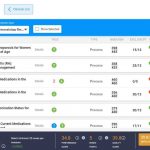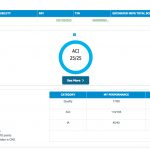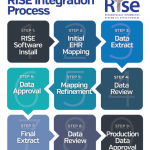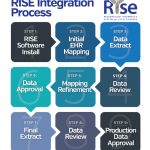Performance on Quality Measures in the RISE Registry and the Merit-Based Incentive Payment System (MIPS) (plenary)
On Sunday, Nov. 5, from 11 a.m.–12 p.m., Jinoos Yazdany, MD, MPH, chair of the ACR’s Research and Publications Subcommittee, will share a brand new dashboard rheumatologists can use to monitor their MIPS performance and compare it against their peers.
“Because of MACRA legislation, the way rheumatologists are paid is fundamentally going to change in the next few years,” Dr. Yazdany says. “We created this MIPS dashboard for rheumatologists so they can estimate where they are in their performance compared to other rheumatology practices, and estimate whether they are going to see positive payments.”
Her plenary session will examine the quality measures available in RISE and help rheumatologists understand average performance on these measures across the Registry. She will also share the final MIPS dashboard prototype and highlight preliminary data to demonstrate what practices are seeing with respect to their MIPS scores.
“It’s an opportunity for people to get a demo of the MIPS dashboard and learn more about how they can use [those] data to succeed,” says Dr. Yazdany.
For example, once MIPS is fully implemented, providers must report six measures in the quality category, and providers would be wise to choose six measures they are confident will assist them in maximizing their scores, Dr. Yazdany says. “If I’m in a practice that’s doing really well meeting the quality measures for rheumatoid arthritis, I might intensively track these particular measures throughout the year through the dashboard to make sure I maintain a high level of performance and fall into a high percentile relative to my peers.”
Large Variations in Tuberculosis Testing for New Biologic Users with Rheumatoid Arthritis Among Providers in the RISE Registry (poster)
On Monday, Nov. 6, from 9–11 a.m., Gabriela Schmajuk, MD, MSc, a rheumatologist researcher based in San Francisco, will present data from the RISE Registry on tuberculosis screening among patients prescribed biologics. It is one of the “key rheumatology-specific quality measures being reported,” Dr. Schmajuk says. “We are seeing a lot of variation in the reporting of this measure, and we think it is largely because quantiferon tests are easy to capture, whereas PPD [purified protein derivative] tests are not.”
In part, Dr. Schmajuk says, PPD tests can be missed by RISE’s quality measure algorithms, because the results are commonly found in physicians’ notes or scanned documents.
“Our study highlights the need to build tools to detect PPDs that are documented in notes or to develop methods for making it easy to put PPD information into a structured field (much like a lab result),” says Dr. Schmajuk. “Studies like ours will highlight areas where improvements like these can be made, so we can make the RISE Registry more useful for participating practices.”



